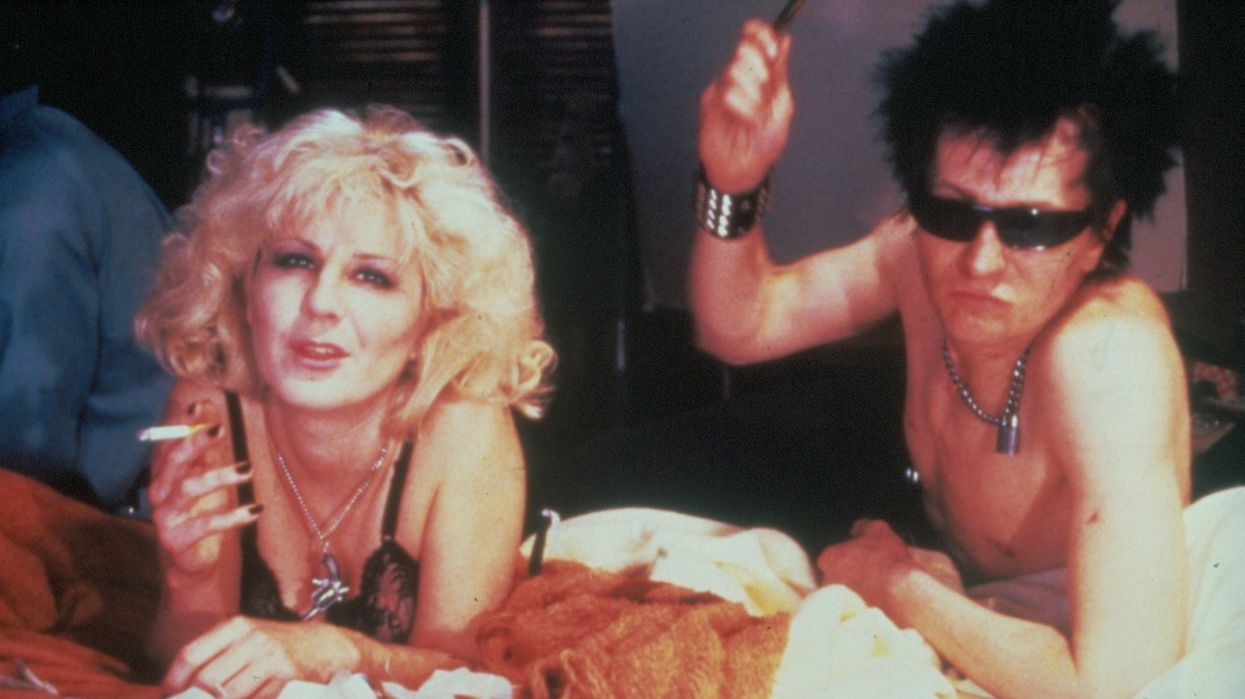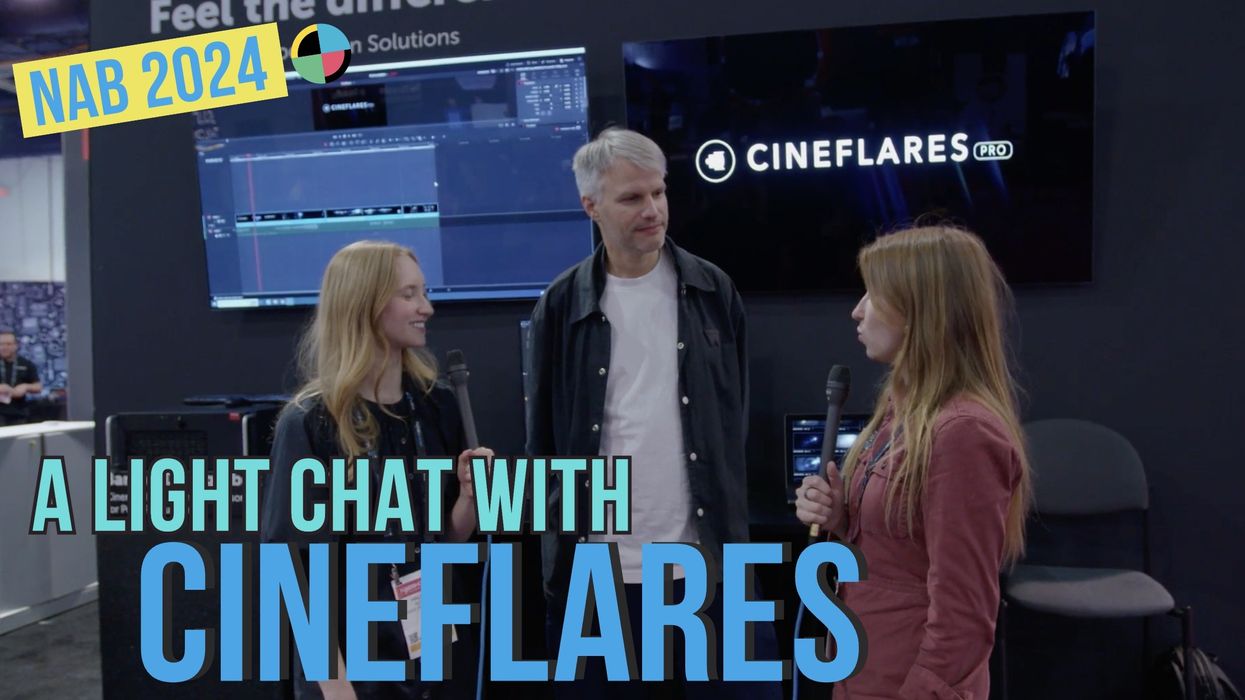History Lesson: New York in the 1980s. Independent Film. Lots of Drugs.
When I came to New York in the early 1980s, the American independent film movement didn’t exist.

This is a guest post by famed producer Ted Hope, excerpted from his new book Hope For Film: From the Frontline of the Independent Cinema Revolutions.
At the time, I was living on less than ten dollars a day. I’d never eaten sushi, my shirts were all torn, and yes, the frames of my glasses were taped. All I knew was that I wanted to make the equivalent of European art films from an American perspective—personal films about what it was really like to live in this world. Slowly, that hope of uniting the Clash with Godard’s radical sensibility, Truffaut’s respect for humanity, and Scorsese’s visceral intensity was coming within my reach.
When I saw Jarmusch’s Stranger Than Paradiseduring its opening weekend run in 1984, there was a guy outside the theater, harassing people with flyers and saying, “Come see my movie; come see my movie.” And when I sat down, a trailer began, and there was the same guy from outside the theater, on the screen selling tube socks. It was Spike Lee, hawking She’s Gotta Have It. And literally, that same week, when I got off the subway, I saw Jim Jarmusch on the platform, and I remember thinking, “These people’s lives are like mine: They’re making movies in New York and getting it done. Why can’t I?”
Can you take those two sensibilities—European art film and DIY punk—and apply it to American independent movies?
The second wave of punk rock and do-it-yourself aesthetics were in the air: that notion that if I have something to say and can say it with a whole lot of passion, maybe someone will connect to it. So I wondered, Can you take those two sensibilities—European art film and DIY punk—and apply it to American independent movies?
One of my first jobs on a set was for Alex Cox’s Sid & Nancy, the story of punk icon Sid Vicious of the Sex Pistols. I learned a lot from the experience, but perhaps the greatest lesson was “Don’t ask for permission.” So much would never have happened if we always followed the rules. I had read all the Sid Vicious scripts circulating at the time, and Alex Cox and Abbe Wool’s was by far the best. When I heard they were going to shoot in New York City, I wanted to get hired. The production assistants were hiring all the coolest kids in town, and I didn’t seem to qualify. I stopped by the office and dropped off my resume. I called. I mailed. But I was getting no traction. Desperate, one day I showed up at the office at 7 am, with two cups of coffee. The production office coordinator showed up soon after, and asked if I was there to work. I told her yes, gave her the coffee, and jumped inside as soon as she opened the door. I emptied the trash, washed the desks, reloaded the copier, and stocked the refrigerator. I made sure I was always the hardest working person in the room. At the end of the day, the coordinator asked me if she could do anything for me. I asked to speak to the production manager. She asked why. “To be hired,” I replied. She laughed and told me not to worry about it. And I was.
There was so much chaos and drug use on the shoot that it gave production assistants like me the opportunity to step up and fill in for areas that weren’t being covered.
There was so much chaos and drug use on the shoot that it gave production assistants like me the opportunity to step up and fill in for areas that weren’t being covered. The first time I ever stepped in for the assistant director to call “Roll” and “Cut” was a shot when Sid falls down the stairs at the Chelsea Hotel. I thought the movie was going to be a disaster, but miraculously, when I finally saw the finished movie at the New York Film Festival, all the mistakes and all the other things I thought were fucked up looked gorgeous, transcendent, and emotional. I thought to myself, “You don’t know anything yet.”
One afternoon, I dropped off my résumé at the Continental Film Group. It sounded like an important company since it had such a generic name—even if it only had one person working with the company. I told the guy (now a longtime close friend, Peter Hawkins) that I wanted to do product placement. “I could do what Spielberg did with Reese’s Pieces in E.T. for independent films, too, you know?” I said. They were making a film titled Once Again, and even though I’d never done it before, I made a proposal that I’d raise a hundred thousand dollars’ worth of product placement before the company started shooting or it wouldn’t have to pay me a single cent. (Which I eventually succeeded in doing on the film.) Eventually, I worked my way up and became a production and development executive for Continental. I was the company’s first year-round employee.For Continental, I found a script that I liked called Tiger Warsaw: the story of a son who returns home to seek forgiveness from his father. Roy London, the acting coach who led Geena Davis and Sharon Stone to their Oscars, wrote the script.
During the preproduction on that film, I had the only panic attack of my entire career. I was in charge of putting together all the actor deals, hiring the crew, and securing the principle location. I needed money to lock everything down, but my financier wouldn’t put the initial funds into the bank until I closed all the key actor deals. I had never dealt with agents before. And they were pushing to close. I was juggling calls from one agent to the next. When I had secured Patrick Swayze, I was trying to get other actors like Mary McDonnell and Piper Laurie to all sign on, but I didn’t have enough time in the day to get it all done. When one of the agents asked me, “Was this ‘a most-favored nations’ deal?” I didn’t know what it meant, but it sounds like a fair term, and I said yes. He said “Great. Done deal.” And we closed it. I wasn’t sure what I agreed to, but if it was that easy, I was going to use it again.
What most-favored nations means is that everyone is treated equally. We weren’t paying Patrick very much, despite his just coming off Dirty Dancing, so as a result, I had closed all of the actors’ deals and the film was going ahead. But before I had said yes to that agent, I literally broke out in hives. Luckily, I found the cure in this term, most-favored nations. And since then, I’ve continued to learn the benefits of treating people fairly and equally.
The industry was filled with self-indulgent, misanthropic, power-obsessed, narcissistic adolescents masquerading as grown-ups.
We got the film made, but the whole experience taught me—at the ripe age of twenty-three—that the industry was filled with self-indulgent, misanthropic, power-obsessed, narcissistic adolescents masquerading as grown-ups. Everyone was fighting each other on that movie: The director-producer locked the line producer out of the office, the cinematographer refused to talk to the director, Patrick Swayze was swearing at the other actors, vehicles were rolled regularly, and key crew members were junkies. It was all absolutely insane. What with the tremendous amount of drug use, both legal and illegal, I said to myself, “The last thing people need is more movies. What they need is serious counseling.”
On the positive side, the experience made me want to change the way films were produced. When I started working as a production assistant, there was always a lot of drug abuse on sets. But whether people were using or not, a frenetic quality on the set made everyone seem cocaine- fueled. It was not about building a creative atmosphere. No one could ever take advantage of serendipity; it was just about going forward with blinders. It all made me question whether I really wanted to remain in the film business.
So after Tiger Warsaw, I quit. I decided I would go back to school either to become a drug counselor or to design sustainable ecosystems for developing nations (by the way, not unlike my responsibilities in the developing film business to this day). But after further thought, I couldn’t foresee spending another few years back in school.
Then I got a phone call from another company, this one called Films Around the World. The company rep told me, “We have to come up with a movie we can complete within ten days: Find a location we can shoot it in, and find people that we don’t have to pay much. We don’t have a script, we don’t have a cast, but we’re going to shoot it in four weeks from now regardless, and we’ll pay you three hundred a week to be the production manager.” Since I was broke and without any idea what I was capable of doing next, I took the proposal as an offer I couldn’t refuse.
If I ran a film school, I would require the students to make a feature film for just a thousand dollars.
We found an abandoned tuberculosis ward in a New Jersey hospital, where apparently the first lobotomy in the state was performed. We quickly came up with the story of a haunted insane asylum where eight teenagers (four good, four bad) go to play and get into trouble. Basically, we were just running people up and down the halls. The film was eventually called Doom Asylum. The company credited me as associate producer, but embarrassed and unsure whether I had even earned it, I hid it from my résumé for years. (If one of the movie’s stars, Kristin Davis, from Sex and the City, hadn’t had it listed on her own credits, I might never have owned up to it). But the film used many techniques that my directors and I applied to many of our first passion projects and still use today: Find a core location that could serve as a base for the entire story and production; write scenes for different times of day, so that the sun is your main lighting instrument; cast friends and acquaintances who want to be there as much as you; and make sure that people enjoyed being there despite horrible conditions. Doom Asylum was an exercise in how to get a movie made with as little available as possible. If I ran a film school, I would require the students to make a feature film for just a thousand dollars. They’d learn tricks that they could apply for the rest of their lives, no matter how poorly the movie turned out.
Excerpted from HOPE FOR FILM, a film memoir with insights from Ted Hope's directors and productions, currently available from Counterpunch Press.
Ted Hope is currently the CEO of Fandor. As an independent film Producer, his films have received some of the industry’s most prestigious honors: THE SAVAGES (2007) earned two Academy Award nominations; 21 GRAMS (2003), two Academy Award nominations and five BAFTA nominations; and IN THE BEDROOM (2001), five Academy Award nominations. Prior to Fandor, Hope was the Executive Director of the San Francisco Film Society.
Source: Hope For Film: From the Frontline of the Independent Cinema Revolutions













